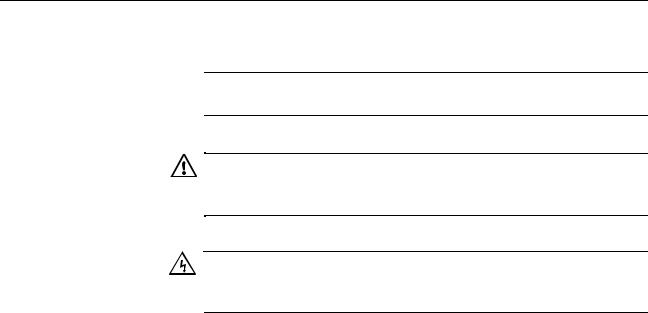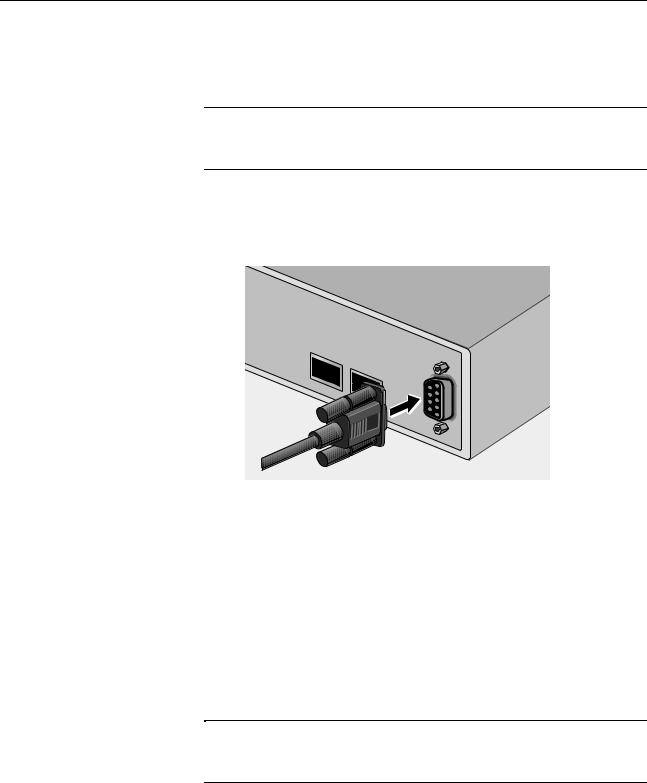Allied Telesis AT-S80 User Manual

Management
Software
AT-S80
User’s Guide
For use with the AT-FS750/16 and
AT-FS750/24 Fast Ethernet Smart
Switches
Version 2.0.0
613-000213 Rev. C
Copyright 2008 Allied Telesis, Inc.
All rights reserved. No part of this publication may be reproduced without prior written permission from Allied Telesis, Inc.
Allied Telesis and the Allied Telesis logo are trademarks of Allied Telesis, Incorporated. All other product names, company names, logos or other designations mentioned herein are trademarks or registered trademarks of their respective owners.
Allied Telesis, Inc. reserves the right to make changes in specifications and other information contained in this document without prior written notice. The information provided herein is subject to change without notice. In no event shall Allied Telesis, Inc.be liable for any incidental, special, indirect, or consequential damages whatsoever, including but not limited to lost profits, arising out of or related to this manual or the information contained herein, even if Allied Telesis, Inc. has been advised of, known, or should have known, the possibility of such damages.

Contents
Preface ............................................................................................................................................................ |
13 |
Where to Find Web-based Guides ................................................................................................................... |
14 |
Document Conventions .................................................................................................................................... |
15 |
Contacting Allied Telesis .................................................................................................................................. |
16 |
Online Support ........................................................................................................................................... |
16 |
Email and Telephone Support.................................................................................................................... |
16 |
Warranty..................................................................................................................................................... |
16 |
Returning Products .................................................................................................................................... |
16 |
Sales or Corporate Information.................................................................................................................. |
16 |
Management Software Updates................................................................................................................. |
16 |
Chapter 1: Overview ...................................................................................................................................... |
17 |
Management Overview..................................................................................................................................... |
18 |
Local Management Connection ................................................................................................................. |
19 |
Remote Management Connection ............................................................................................................. |
19 |
Remote SNMP Management............................................................................................................................ |
20 |
Management Access Level .............................................................................................................................. |
21 |
Ports 17 and 18 on the AT-FS750/16 Switch and Ports 25 and 26 on the AT-FS750/24 Switch..................... |
22 |
Using the Menus Interface ........................................................................................ |
23 |
Chapter 2: Getting Started with the Menus Interface ................................................................................. |
25 |
Starting a Local Management Session............................................................................................................. |
26 |
Using the Menus Interface................................................................................................................................ |
28 |
Quitting from a Local Management Session..................................................................................................... |
29 |
Chapter 3: Basic Switch Parameters ........................................................................................................... |
31 |
Configuring the IP Address, Subnet Mask, and Gateway Address .................................................................. |
32 |
Enabling and Disabling the DHCP Client ......................................................................................................... |
35 |
Configuring System Administration Information ............................................................................................... |
36 |
Setting the User Interface Configuration .......................................................................................................... |
38 |
Viewing Switch Information .............................................................................................................................. |
43 |
Rebooting the Switch........................................................................................................................................ |
46 |
Pinging a Remote System ................................................................................................................................ |
48 |
Returning the AT-S80 Management Software to the Factory Default Values .................................................. |
51 |
Chapter 4: Port Configuration ...................................................................................................................... |
53 |
Displaying the Port Parameters........................................................................................................................ |
54 |
Enabling and Disabling a Port .......................................................................................................................... |
56 |
Setting a Port’s Speed and Duplex Mode......................................................................................................... |
57 |
Changing the Flow Control Setting................................................................................................................... |
59 |
Chapter 5: Port Trunking .............................................................................................................................. |
61 |
Port Trunking Overview .................................................................................................................................... |
62 |
Port Trunking Guidelines............................................................................................................................ |
62 |
Creating a Port Trunk ....................................................................................................................................... |
64 |
3
Contents |
|
Modifying a Port Trunk...................................................................................................................................... |
67 |
Enabling and Disabling a Port Trunk ................................................................................................................ |
69 |
Chapter 6: IGMP Snooping ........................................................................................................................... |
71 |
IGMP Snooping Overview................................................................................................................................. |
72 |
Configuring IGMP Snooping ............................................................................................................................. |
74 |
Enabling or Disabling IGMP Snooping ....................................................................................................... |
74 |
Setting the Age-out Timer........................................................................................................................... |
76 |
Setting Group Members ............................................................................................................................. |
76 |
Chapter 7: Static Multicast Address ............................................................................................................. |
79 |
Static Multicast Address Overview.................................................................................................................... |
80 |
Creating a Static Multicast Address .................................................................................................................. |
81 |
Adding a Static Multicast Address .............................................................................................................. |
81 |
Deleting a Static Group .............................................................................................................................. |
82 |
Deleting a Static Member Port.................................................................................................................... |
83 |
Chapter 8: Port Mirroring .............................................................................................................................. |
85 |
Port Mirroring Overview .................................................................................................................................... |
86 |
Configuring Port Mirroring................................................................................................................................. |
87 |
Enabling or Disabling Port Mirroring ................................................................................................................. |
89 |
Chapter 9: Dial-in User Configuration .......................................................................................................... |
91 |
Dial-in User Configuration Overview................................................................................................................. |
92 |
Configuring a Dial-in User................................................................................................................................. |
93 |
Adding a Dial-in User.................................................................................................................................. |
93 |
Deleting a Dial-in User................................................................................................................................ |
94 |
Modifying a |
|
Dial-in User ....................................................................................................................................................... |
95 |
Chapter 10: Virtual LANs ............................................................................................................................... |
97 |
VLAN Overview................................................................................................................................................. |
98 |
Port-based VLAN Overview ............................................................................................................................ |
100 |
VLAN Name.............................................................................................................................................. |
100 |
Group ID ................................................................................................................................................... |
100 |
General Rules for Creating a Port-based VLAN....................................................................................... |
100 |
Tagged VLAN Overview ................................................................................................................................. |
101 |
Tagged and Untagged Ports .................................................................................................................... |
101 |
Port VLAN Identifier.................................................................................................................................. |
102 |
General Rules for Creating a Tagged VLAN ............................................................................................ |
102 |
Creating a VLAN ............................................................................................................................................. |
103 |
Configuring the PVID of Untagged Ports ........................................................................................................ |
107 |
Changing the PVID................................................................................................................................... |
109 |
Changing Port VLAN Type ....................................................................................................................... |
110 |
Displaying the VLANs ..................................................................................................................................... |
111 |
Resetting a VLAN to the Default Value........................................................................................................... |
113 |
Modifying a VLAN ........................................................................................................................................... |
114 |
Deleting a VLAN ............................................................................................................................................. |
116 |
Deleting a Port-based VLAN .................................................................................................................... |
116 |
Deleting a Tagged VLAN.......................................................................................................................... |
117 |
Chapter 11: Simple Network Management Protocol (SNMP) ................................................................... |
119 |
SNMP Overview.............................................................................................................................................. |
120 |
Community String Attributes ........................................................................................................................... |
121 |
Community String Name .......................................................................................................................... |
121 |
Access Mode ............................................................................................................................................ |
121 |
Operating Status....................................................................................................................................... |
121 |
Open or Closed Access Status................................................................................................................. |
121 |
4
|
AT-S80 Management Software User’s Guide |
Trap Receivers......................................................................................................................................... |
121 |
Default SNMP Community Strings ................................................................................................................. |
123 |
Creating an SNMP Community ...................................................................................................................... |
124 |
Adding an SNMP Community .................................................................................................................. |
124 |
Deleting an SNMP Community ................................................................................................................ |
126 |
Modifying an SNMP Community .............................................................................................................. |
127 |
Creating an SNMP Host ................................................................................................................................. |
129 |
Adding an SNMP Host ............................................................................................................................. |
129 |
Deleting an Host Entry ............................................................................................................................. |
130 |
Modifying an Host Entry........................................................................................................................... |
131 |
Enabling and Disabling SNMP Traps ............................................................................................................. |
133 |
Enabling an SNMP Trap .......................................................................................................................... |
133 |
Deleting a Trap Receiver ......................................................................................................................... |
135 |
Modifying a Trap Receiver ....................................................................................................................... |
135 |
Enabling or Disabling Traps ..................................................................................................................... |
137 |
Chapter 12: Quality of Service (QoS) ......................................................................................................... |
139 |
QoS Overview ................................................................................................................................................ |
140 |
Mapping CoS Priorities to Egress Queues ..................................................................................................... |
143 |
Changing the Temporary Priority Level of Untagged Traffic .......................................................................... |
146 |
Chapter 13: Rapid Spanning Tree Protocol (RSTP) ................................................................................. |
149 |
RSTP Overview .............................................................................................................................................. |
150 |
Bridge Priority and the Root Bridge.......................................................................................................... |
150 |
Mixed STP and RSTP Networks .............................................................................................................. |
155 |
Rapid Spanning Tree and VLANs............................................................................................................ |
156 |
Enabling or Disabling RSTP ........................................................................................................................... |
157 |
Configuring the RSTP Bridge Settings ........................................................................................................... |
160 |
Configuring STP Compatibility........................................................................................................................ |
162 |
Configuring RSTP Port Settings ..................................................................................................................... |
163 |
Configuring the Basic RSTP Port Settings............................................................................................... |
163 |
Configuring the Advanced RSTP Port Settings........................................................................................ |
165 |
Displaying the RSTP Topology....................................................................................................................... |
168 |
Chapter 14: Bandwidth Control .................................................................................................................. |
171 |
Bandwidth Control Overview .......................................................................................................................... |
172 |
Configuring Bandwidth Control....................................................................................................................... |
173 |
Assigning Broadcast or Multicast Packets ............................................................................................... |
173 |
Setting the Ingress Limit Rate .................................................................................................................. |
174 |
Setting Ingress Status.............................................................................................................................. |
174 |
Setting Ingress DLF Status ...................................................................................................................... |
175 |
Chapter 15: IP Access List ......................................................................................................................... |
177 |
IP Access List Overview ................................................................................................................................. |
178 |
Configuring IP Access List.............................................................................................................................. |
179 |
Enabling or Disabling IP Access List Restriction...................................................................................... |
179 |
Adding or Removing IP Addresses .......................................................................................................... |
180 |
Chapter 16: Destination MAC Filter ........................................................................................................... |
181 |
Destination MAC Filtering Overview............................................................................................................... |
182 |
Configuring Destination MAC Filtering ........................................................................................................... |
183 |
Setting Destination MAC Filtering ............................................................................................................ |
183 |
Removing Destination MAC Filtering Addresses ..................................................................................... |
184 |
Chapter 17: 802.1x Port-based Network Access Control ........................................................................ |
185 |
802.1x Port-based Network Access Control Overview................................................................................... |
186 |
Authentication Process ............................................................................................................................ |
187 |
Authenticator Ports................................................................................................................................... |
187 |
5
Contents |
|
General Steps........................................................................................................................................... |
189 |
Port-based Network Access Control Guidelines....................................................................................... |
189 |
Guest VLANs .................................................................................................................................................. |
192 |
Configuring 802.1x Port-based Network Access Control Feature................................................................... |
193 |
Configuring MAC Based Access Control Feature........................................................................................... |
197 |
Chapter 18: RADIUS Authentication Protocol ........................................................................................... |
201 |
RADIUS Overview .......................................................................................................................................... |
202 |
RADIUS Implementation Guidelines ........................................................................................................ |
202 |
Configuring the RADIUS Client....................................................................................................................... |
203 |
Displaying the RADIUS Client Settings........................................................................................................... |
205 |
Chapter 19: Management Software Updates ............................................................................................. |
207 |
Downloading a New Management Software Image Using TFTP.................................................................... |
208 |
Using the Web Browser Interface .......................................................................... |
211 |
Chapter 20: Starting a Web Browser Management Session .................................................................... |
213 |
Establishing a Remote Connection to Use the Web Browser Interface.......................................................... |
214 |
Web Browser Tools......................................................................................................................................... |
217 |
Quitting a Web Browser Management Session .............................................................................................. |
218 |
Chapter 21: Basic Switch Parameters ....................................................................................................... |
219 |
Configuring an IP Address, Subnet Mask and Gateway Address................................................................... |
220 |
Setting Up the IP Access List.......................................................................................................................... |
222 |
Creating an IP Access List ....................................................................................................................... |
222 |
Deleting an IP Address............................................................................................................................. |
224 |
Enabling and Disabling the DHCP Client........................................................................................................ |
225 |
Configuring System Management Information................................................................................................ |
226 |
Configuring System Administration Information.............................................................................................. |
228 |
Adding System Administration Information............................................................................................... |
228 |
Modifying Administration Information ....................................................................................................... |
229 |
Deleting Administration Information.......................................................................................................... |
230 |
Setting the User Interface Configuration......................................................................................................... |
231 |
Viewing System Information ........................................................................................................................... |
233 |
Rebooting a Switch ......................................................................................................................................... |
236 |
Pinging a Remote System .............................................................................................................................. |
238 |
Returning the AT-S80 Management Software to the Factory Default Values................................................. |
240 |
Chapter 22: Port Configuration ................................................................................................................... |
241 |
Viewing and Configuring Ports Using the Physical Configuration Page ......................................................... |
242 |
Chapter 23: Port Trunking ........................................................................................................................... |
245 |
Creating a Port Trunk...................................................................................................................................... |
246 |
Modifying a Port Trunk.................................................................................................................................... |
248 |
Enabling and Disabling a Port Trunk .............................................................................................................. |
249 |
Chapter 24: Port Mirroring .......................................................................................................................... |
251 |
Configuring Port Mirroring............................................................................................................................... |
252 |
Disabling Port Mirroring .................................................................................................................................. |
253 |
Chapter 25: Static Multicast Address Table .............................................................................................. |
255 |
Configuring Static Multicast Address Table .................................................................................................... |
256 |
Modifying a Static Multicast Address Table .................................................................................................... |
258 |
Deleting a Group MAC Address...................................................................................................................... |
259 |
Chapter 26: IGMP Snooping ....................................................................................................................... |
261 |
Configuring IGMP Snooping ........................................................................................................................... |
262 |
6
|
AT-S80 Management Software User’s Guide |
Chapter 27: Destination MAC Address Filter ............................................................................................ |
265 |
Setting a Destination MAC Filter .................................................................................................................... |
266 |
Removing a MAC Address ............................................................................................................................. |
268 |
Chapter 28: Bandwidth Control .................................................................................................................. |
269 |
Configuring Bandwidth Control....................................................................................................................... |
270 |
Chapter 29: Virtual LANs ............................................................................................................................ |
273 |
Assigning Ports to a VLAN ............................................................................................................................. |
274 |
Creating a Tagged VLAN ............................................................................................................................... |
275 |
Modifying a Tagged VLAN.............................................................................................................................. |
277 |
Deleting a Tagged VLAN................................................................................................................................ |
279 |
Creating a Port-Based VLAN.......................................................................................................................... |
280 |
Modifying a Port-Based VLAN........................................................................................................................ |
281 |
Deleting a Port-Based VLAN .......................................................................................................................... |
283 |
Chapter 30: Simple Network Management Protocol (SNMP) .................................................................. |
285 |
Creating an SNMP Community ...................................................................................................................... |
286 |
Modifying an SNMP Community..................................................................................................................... |
287 |
Deleting an SNMP Community....................................................................................................................... |
288 |
Creating a Host Table..................................................................................................................................... |
289 |
Modifying a Host Table Entry ......................................................................................................................... |
290 |
Deleting a Host Table Entry............................................................................................................................ |
291 |
Enabling or Disabling Traps ........................................................................................................................... |
292 |
Modifying Traps .............................................................................................................................................. |
293 |
Deleting Traps ................................................................................................................................................ |
294 |
Chapter 31: Quality of Service (QoS) ......................................................................................................... |
295 |
Mapping CoS Priorities to Egress Queues ..................................................................................................... |
296 |
Configuring CoS ............................................................................................................................................. |
298 |
Chapter 32: Rapid Spanning Tree Protocol (RSTP) ................................................................................. |
301 |
Basic RSTP Configuration.............................................................................................................................. |
302 |
Configuring RSTP Port Settings ..................................................................................................................... |
305 |
Configuring the Basic RSTP Port Settings............................................................................................... |
305 |
Configuring the Advanced RSTP Port Settings........................................................................................ |
307 |
Viewing the RSTP Topology........................................................................................................................... |
309 |
Chapter 33: 802.1x Port-based Network Access Control Feature .......................................................... |
311 |
Configuring 802.1x Port-based Network Access Control Feature .................................................................. |
312 |
Chapter 34: Dial-in User .............................................................................................................................. |
317 |
Adding a Dial-in User...................................................................................................................................... |
318 |
Modifying a Dial-in User ................................................................................................................................. |
319 |
Deleting a Dial-in User.................................................................................................................................... |
320 |
Chapter 35: RADIUS Authentication Protocol .......................................................................................... |
321 |
Configuring the RADIUS Client ...................................................................................................................... |
322 |
Chapter 36: Management Software Updates ............................................................................................ |
323 |
Upgrading a Firmware Image With TFTP....................................................................................................... |
324 |
Upgrading a Firmware Image With HTTP ...................................................................................................... |
326 |
Chapter 37: Statistics ............................................................................................................................... |
... 329 |
Displaying Switch Statistics ............................................................................................................................ |
330 |
Displaying Traffic Comparison Statistics.................................................................................................. |
330 |
Displaying Error Group Statistics ............................................................................................................. |
335 |
Displaying Historical Status Charts .......................................................................................................... |
337 |
7
Contents |
|
Appendix A: AT-S80 Software Default Settings ........................................................................................ |
339 |
Index .............................................................................................................................................................. |
343 |
8

Figures
Figure 1. Connecting the Management Cable to the Console Port |
.....................................................................................26 |
|
Figure 2. Login Menu........................................................................................................................................................... |
27 |
|
Figure 3. Main Menu............................................................................................................................................................ |
27 |
|
Figure 4. |
Basic Switch Configuration Menu......................................................................................................................... |
32 |
Figure 5. |
System IP Configuration Menu............................................................................................................................. |
33 |
Figure 6. |
System Administration Configuration Menu ......................................................................................................... |
36 |
Figure 7. |
User Interface Configuration Menu....................................................................................................................... |
39 |
Figure 8. |
General Information Menu.................................................................................................................................... |
43 |
Figure 9. |
Switch Tools Configuration Menu......................................................................................................................... |
46 |
Figure 10. System Reboot Menu......................................................................................................................................... |
47 |
|
Figure 11. Ping Execution Menu ......................................................................................................................................... |
48 |
|
Figure 12. Ping Results ....................................................................................................................................................... |
50 |
|
Figure 13. |
Port Configuration Menu..................................................................................................................................... |
54 |
Figure 14. Advanced Switch Configuration Menu................................................................................................................ |
64 |
|
Figure 15. |
Trunk Configuration Menu.................................................................................................................................. |
65 |
Figure 16. Advanced Switch Configuration Menu................................................................................................................ |
74 |
|
Figure 17. IGMP Snooping Configuration Menu.................................................................................................................. |
75 |
|
Figure 18. |
Static Multicast Address Table Menu ................................................................................................................. |
81 |
Figure 19. |
Port Mirroring Menu............................................................................................................................................ |
87 |
Figure 20. |
Dial-in User Configuration Menu ........................................................................................................................ |
93 |
Figure 21. VLAN Management Menu ................................................................................................................................ |
103 |
|
Figure 22. Tagged-based VLAN Configuration Menu........................................................................................................ |
104 |
|
Figure 23. VLAN Creation Menu........................................................................................................................................ |
105 |
|
Figure 24. Port-Based VLAN Configuration Menu............................................................................................................. |
108 |
|
Figure 25. Config VLAN Member Menu............................................................................................................................. |
112 |
|
Figure 26. |
Basic Switch Configuration Menu..................................................................................................................... |
124 |
Figure 27. SNMP Configuration Menu............................................................................................................................... |
125 |
|
Figure 28. Community Configuration Menu....................................................................................................................... |
125 |
|
Figure 29. |
Host Configuration Menu.................................................................................................................................. |
129 |
Figure 30. |
Trap Receiver Configuration Menu................................................................................................................... |
134 |
Figure 31. |
Quality of Service Configuration Menu............................................................................................................. |
143 |
Figure 32. |
Traffic Class Configuration Menu ..................................................................................................................... |
144 |
Figure 33. |
Port Priority Configuration Menu ...................................................................................................................... |
147 |
Figure 34. |
Point-to-Point Ports .......................................................................................................................................... |
154 |
Figure 35. Edge Port ......................................................................................................................................................... |
155 |
|
Figure 36. |
Point-to-Point and Edge Port............................................................................................................................ |
155 |
Figure 37. VLAN Fragmentation........................................................................................................................................ |
156 |
|
Figure 38. RSTP Configuration Menu................................................................................................................................ |
157 |
|
Figure 39. RSTP Basic Port Configuration Menu .............................................................................................................. |
163 |
|
Figure 40. RSTP Advanced Port Configuration Menu....................................................................................................... |
166 |
|
Figure 41. |
Topology Information Menu.............................................................................................................................. |
168 |
Figure 42. Advanced Switch Configuration Menu.............................................................................................................. |
173 |
|
Figure 43. IP Access List Menu......................................................................................................................................... |
179 |
|
Figure 44. |
Destination MAC Filter Menu............................................................................................................................ |
183 |
Figure 45. |
Example of the Authenticator Role................................................................................................................... |
188 |
Figure 46. |
Port-based Authentication Across Multiple Switches ....................................................................................... |
191 |
Figure 47. |
Port Based Access Control Configuration Menu .............................................................................................. |
193 |
Figure 48. MAC Based Access Control Configuration Menu............................................................................................. |
198 |
|
Figure 49. RADIUS Server Configuration Menu................................................................................................................ |
203 |
|
Figure 50. Software Upgrade Menu (1 of 2) ...................................................................................................................... |
209 |
|
9
Figures |
|
|
Figure 51. Software Upgrade Menu (2 of 2) ...................................................................................................................... |
209 |
|
Figure 52. |
Entering a Switch’s IP Address in the URL Field.............................................................................................. |
214 |
Figure 53. AT-S80 Login Dialog Box ................................................................................................................................. |
215 |
|
Figure 54. Home Page for the AT-FS750/24 Switch.......................................................................................................... |
216 |
|
Figure 55. IP Setup Page .................................................................................................................................................. |
220 |
|
Figure 56. IP Access List Page.......................................................................................................................................... |
222 |
|
Figure 57. Management Page ........................................................................................................................................... |
226 |
|
Figure 58. |
Administration Page.......................................................................................................................................... |
228 |
Figure 59. |
Modify Administration Page.............................................................................................................................. |
229 |
Figure 60. |
User Interface Page.......................................................................................................................................... |
231 |
Figure 61. |
Switch Information Page................................................................................................................................... |
233 |
Figure 62. Reboot Page..................................................................................................................................................... |
236 |
|
Figure 63. Ping Page ......................................................................................................................................................... |
238 |
|
Figure 64. Ping Test Results Page .................................................................................................................................... |
239 |
|
Figure 65. |
Physical Interface Page.................................................................................................................................... |
242 |
Figure 66. Trunking Page .................................................................................................................................................. |
246 |
|
Figure 67. |
Mirroring Page .................................................................................................................................................. |
252 |
Figure 68. |
Static Multicast Address Table Page................................................................................................................ |
256 |
Figure 69. |
Static Multicast Table with Group MAC Addresses .......................................................................................... |
257 |
Figure 70. |
Modify Static Multicast Address Table Page .................................................................................................... |
258 |
Figure 71. IGMP Snooping Page....................................................................................................................................... |
262 |
|
Figure 72. |
Destination MAC Filter Page ............................................................................................................................ |
266 |
Figure 73. |
Destination MAC Address with Entries............................................................................................................. |
267 |
Figure 74. Bandwidth Control Page................................................................................................................................... |
270 |
|
Figure 75. VLAN Mode Page............................................................................................................................................. |
274 |
|
Figure 76. Tagged VLAN Page.......................................................................................................................................... |
275 |
|
Figure 77. Example of Tagged VLAN Page....................................................................................................................... |
276 |
|
Figure 78. Modify VLAN Page ........................................................................................................................................... |
277 |
|
Figure 79. Port-Based VLAN Page.................................................................................................................................... |
280 |
|
Figure 80. Modify Port-based VLAN .................................................................................................................................. |
281 |
|
Figure 81. Community Table Page .................................................................................................................................... |
286 |
|
Figure 82. Host Table Page............................................................................................................................................... |
289 |
|
Figure 83. |
Trap Setting Page............................................................................................................................................. |
292 |
Figure 84. CoS Page ......................................................................................................................................................... |
296 |
|
Figure 85. Default Port VLAN &CoS Page......................................................................................................................... |
299 |
|
Figure 86. |
Rapid Spanning Tree Configuration Page........................................................................................................ |
302 |
Figure 87. RSTP Basic Port Configuration Page............................................................................................................... |
306 |
|
Figure 88. RSTP Advanced Port Configuration Page........................................................................................................ |
308 |
|
Figure 89. |
Designated Topology Information Page ........................................................................................................... |
309 |
Figure 90. |
802.1x Access Control Configuration Page...................................................................................................... |
312 |
Figure 91. |
Dial-in User Page.............................................................................................................................................. |
318 |
Figure 92. RADIUS Page................................................................................................................................................... |
322 |
|
Figure 93. Firmware Upgrade via TFTP Page................................................................................................................... |
325 |
|
Figure 94. Firmware Upgrade via HTTP Page................................................................................................................... |
327 |
|
Figure 95. |
Traffic Comparison Chart Page ........................................................................................................................ |
331 |
Figure 96. Error Group Chart Page.................................................................................................................................... |
335 |
|
Figure 97. |
Historical Status Chart Page............................................................................................................................. |
337 |
10

Tables
Table 1. |
Menus Interface Operations ................................................................................................................................. |
28 |
Table 2. |
Default Mappings of IEEE 802.1p Priority Levels to Egress Port Priority Queues ............................................. |
141 |
Table 3. RSTP Auto-Detect Port Costs ............................................................................................................................ |
152 |
|
Table 4. RSTP Auto-Detect Port Trunk Costs .................................................................................................................. |
152 |
|
Table 5. |
Port Priority Value Increments ............................................................................................................................ |
153 |
Table 6. |
RSTP Point-to-Point Status ................................................................................................................................ |
167 |
Table 7. |
Traffic Comparison Options ................................................................................................................................ |
331 |
Table 8. |
AT-S80 Management Software Default Settings ................................................................................................ |
339 |
11
Tables
12

Preface
This guide contains instructions on how to use the AT-S80 management software to monitor and manage the AT-FS750/16 and AT-FS750/24 Fast Ethernet Smart switches.
The AT-S80 Management Software has two management interfaces: a menus interface and a web browser interface. You access the menus interface through the console port on the switch. You access the web browser interface from any management workstation on your network that has a web browser application. For background information on the management interfaces, refer to Chapter 1, “Overview” on page 17.
Note
The AT-S80 management software does not support remote management with the Telnet application protocol or an SNMP program.
Note
The interface illustrations in this book show the interface for the AT-FS750/16 Fast Ethernet Smart Switch in the menus section and the interface for the AT-FS750/24 Fast Ethernet Smart Switch in the web section of the book. The AT-S80 software features are identical in both switches with the exception of the number of ports displayed.
This preface contains the following sections:
“Where to Find Web-based Guides” on page 14
“Document Conventions” on page 15
“Contacting Allied Telesis” on page 16
13

Preface
Where to Find Web-based Guides
The installation and user guides for all Allied Telesis products are available in portable document format (PDF) on our web site at www.alliedtelesis.com. You can view the documents online or download them onto a local workstation or server.
For information about installing the AT-FS750/16 and AT-FS750/24 switches, see the AT-FS750/16, AT-FS750/24 Fast Ethernet Smart Switches Installation Guide (P/N 613-000354).
14

AT-S80 Management Software User’s Guide
Document Conventions
This document uses the following conventions:
Note
Notes provide additional information.
Caution
Cautions inform you that performing or omitting a specific action may result in equipment damage or loss of data.
Warning
Warnings inform you that performing or omitting a specific action may result in bodily injury.
15

Preface
Contacting Allied Telesis
Online Support
Email and
Telephone
Support
Warranty
Returning
Products
Sales or
Corporate
Information
Management
Software Updates
This section provides Allied Telesis contact information for technical support as well as sales and corporate information.
You can request technical support online by accessing the Allied Telesis Knowledge Base:
www.alliedtelesis.com/support. You can use the Knowledge Base to submit questions to our technical support staff and review answers to previously asked questions.
For Technical Support via email or telephone, refer to the Support section of the Allied Telesis web site: www.alliedtelesis.com. Select your country from the list displayed on the website. Then select the appropriate menu tab.
All Allied Telesis warranties are subject to the terms and conditions set out in the Allied Telesis Limited Warranties on our web site at www.alliedtelesis.com/warranty.
Products for return or repair must first be assigned a return materials authorization (RMA) number. A product sent to Allied Telesis without an RMA number will be returned to the sender at the sender’s expense.
To obtain an RMA number, contact the Allied Telesis Technical Support group at our web site: www.alliedtelesis.com/support/rma. Select your country from the list displayed on the website. Then select the appropriate menu tab.
You can contact Allied Telesis for sales or corporate information through our web site at www.alliedtelesis.com. Select your country from the list displayed on the website. Then select the appropriate menu tab.
New releases of the management software for our managed products are available from the following Internet sites:
Allied Telesis web site: www.alliedtelesis.com
Allied Telesis FTP server: ftp://ftp.alliedtelesis.com
If the FTP server prompts you to log on, enter “anonymous” as the user name and your email address as the password.
16

Chapter 1
Overview
This chapter provides an overview of the AT-S80 Management Software for the AT-FS750/16 and AT-FS750/24 switches. This chapter contains the following sections:
“Management Overview” on page 18
“Remote SNMP Management” on page 20
“Management Access Level” on page 21
“Ports 17 and 18 on the AT-FS750/16 Switch and Ports 25 and 26 on the AT-FS750/24 Switch” on page 22
17

Chapter 1: Overview
Management Overview
The AT-S80 Management Software allows you to view and adjust the operating parameters of the AT-FS750/16 and AT-FS750/24 Fast Ethernet Switches. A few examples of the management functions are listed here:
Enable and disable ports
Configure a port’s speed and duplex mode
Create port trunks
Configure a port mirror
Configure Quality of Service (QoS)
Create port-based and tagged virtual LANs
Configure 802.1x port-based network access control
The AT-S80 management software comes preinstalled on the switch with default settings for all of the switch’s operating parameters. Managing the switch is not required if the default settings are adequate for your network. Instead, you can use the device as an unmanaged switch by connecting it to your network and powering on the unit, as explained in the hardware installation guide.
Note
The default settings for the management software are listed in
Appendix A, “AT-S80 Software Default Settings” on page 339.
In order to actively manage the switch and adjust its operating parameters, you must access the switch’s AT-S80 management software. You can access the management software using one of the following methods:
Local management using the Console port on the switch and the menus interface. See “Local Management Connection” on page 19.
Remote management using a web browser and the web browser interface. See “Remote Management Connection” on page 19.
The chapters in Section I of this guide explain how to manage the switch from a local management session using the menu interface. The chapters in Section II explain how to manage the device from a remote session using the web browser interface. Both interfaces allow you to configure all of a switch’s parameters.
18

Local
Management
Connection
Remote
Management
Connection
AT-S80 Management Software User’s Guide
To establish a local management connection with an AT-FS750/16 or AT-FS750/24 Fast Ethernet Switch, you must connect a terminal or a PC with a terminal emulator program to the console port on the front of the switch using the management cable which is included with the unit. This type of connection is referred to as “local” because you must be physically close to the switch, such as in the wiring closet where the device is located.
Note
For instructions on how to start a local management session, refer to “Starting a Local Management Session” on page 26.
A switch does not need an Internet Protocol (IP) address for local management. You can start a local management session on a switch at any time. It does not interfere with the forwarding of network packets by the device.
The AT-S80 management software has a web browser interface for managing the AT-FS750/16 and AT-FS750/24 switches remotely from any management station on your network that has a web browser application.
The switch must have an IP address in order for you to manage it remotely with a web browser. You can assign the IP address manually or activate the DHCP client so the switch automatically obtains its IP configuration from a DHCP server on the network. The initial assignment of an IP address or the activation of the DHCP client software must be performed through a local management session of the switch.
For instructions on how to start a remote management session, refer to “Establishing a Remote Connection to Use the Web Browser Interface” on page 214.
Note
A remote management station must be a member of the switch’s Default VLAN for you to use it to manage the unit. The switch processes remote management packets only when they are received on an untagged port of the Default VLAN.
Note
The AT-S80 Management Software does not support remote management with the Telnet application protocol.
19

Chapter 1: Overview
Remote SNMP Management
You can also remotely configure the switch using a Simple Network Management (SNMP) application such as AT-View. This management method requires an understanding of Management Information Base (MIB) objects.
Note
You must assign an IP address to the switch for remote SNMP management. For background information, see “Configuring the IP Address, Subnet Mask, and Gateway Address” on page 32.
20

AT-S80 Management Software User’s Guide
Management Access Level
The AT-S80 Management Software has one management access level: manager. When you log in as a manager, you can view and configure all of the switch’s operating parameters. You log in as a manager by entering the appropriate username and password when you start an AT-S80 management session. The default username is “manager” and the default password is “friend.”
21

Chapter 1: Overview
Ports 17 and 18 on the AT-FS750/16 Switch and Ports 25 and 26 on the AT-FS750/24 Switch
Ports 17 and 18 on the AT-FS750/16 switch and ports 25 and 26 on the AT-FS750/24 switch are dual ports. Each has one 10/100/1000Base-T twisted pair port and one transceiver slot for an optional SFP transceiver. Note the following when configuring these dual ports:
By default, the twisted pair port of a dual port is the active port.
An optional SFP port is activated when it establishes a link with an end node, at which point the affiliated twisted pair port changes to the redundant state.
A twisted pair port and its affiliated optional SFP port share the same configuration settings, including port settings and VLAN assignments. When an SFP port establishes a link with an end node, it operates with the same settings as the twisted pair port.
22

Section I
Using the Menus Interface
The chapters in this section explain how to manage the switch using the menus interface of the AT-S80 management software. The chapters include:
Chapter 2, “Getting Started with the Menus Interface” on page 25
Chapter 3, “Basic Switch Parameters” on page 31
Chapter 4, “Port Configuration” on page 53
Chapter 5, “Port Trunking” on page 61
Chapter 6, “IGMP Snooping” on page 71
Chapter 7, “Static Multicast Address” on page 79
Chapter 8, “Port Mirroring” on page 85
Chapter 9, ”Dial-in User Configuration” on page 91
Chapter 10, “Virtual LANs” on page 97
Chapter 11, ”Simple Network Management Protocol (SNMP)” on page 119
Chapter 12, “Quality of Service (QoS)” on page 139
Chapter 13, ”Rapid Spanning Tree Protocol (RSTP)” on page 149
Chapter 14, ”Bandwidth Control” on page 171
Chapter 15, ”IP Access List” on page 177
Chapter 16, ”Destination MAC Filter” on page 181
Chapter 17, “802.1x Port-based Network Access Control” on page 185
Chapter 18, “RADIUS Authentication Protocol” on page 201
Chapter 19, “Management Software Updates” on page 207
Section I: Using the Menus Interface |
23 |
24 |
Section I: Using the Menus Interface |

Chapter 2
Getting Started with the Menus Interface
This chapter contains instructions on how to access the menus interface of the AT-S80 Management Software by starting a local management session. This chapter contains the following sections:
“Starting a Local Management Session” on page 26
“Using the Menus Interface” on page 28
“Quitting from a Local Management Session” on page 29
Section I: Using the Menus Interface |
25 |

Chapter 2: Getting Started with the Menus Interface
Starting a Local Management Session
You establish a local management session with the switch by connecting a terminal or personal computer with a terminal emulation program to the the Console port on the front panel of the switch.
Note
The switch does not need an IP address when managed from a local management session.
To start a local management session, perform the following procedure:
1.Connect one end of the management cable included with the switch to the Console port on the switch, as shown in Figure 1.
23 |
CONSOLE |
|
|
|
24 |
Figure 1. Connecting the Management Cable to the Console Port
2.Connect the other end of the cable to the RS-232 port on a terminal or PC with a terminal emulator program.
3.Configure the terminal or terminal emulator program as follows:
Baud per second: 9600
Data bits: 8
Stop bits: 1
Flow control: None
Note
These settings are for a DEC VT100 or ANSI terminal, or an equivalent terminal emulation program. They cannot be changed.
26 |
Section I: Using the Menus Interface |

AT-S80 Management Software User’s Guide
The Login Menu is shown in Figure 2.
======================================================
AT-FS750/16 Management System Local - Console
Allied Telesis International Corp. Copyright 2008
======================================================
Login Menu Login:
Figure 2. Login Menu
4.Enter the manager login name and press Return. The default name is “manager.”
You are prompted for a password.
5.Enter the manager password. The default password is “friend.”
Note
The login name and password are case sensitive. To change the login name or password, refer to “Setting the User Interface Configuration” on page 38.
The Main Menu is shown in Figure 3.
Main Menu
[G]eneral Information [B]asic Switch Configuration
[A]dvanced Switch Configuration Switch [T]ools
[S]tatistics
[Q]uit
Command>
Figure 3. Main Menu
Section I: Using the Menus Interface |
27 |

Chapter 2: Getting Started with the Menus Interface
Using the Menus Interface
If you are using a DEC VT00 or ANSI (the default) terminal configuration, refer to Table 1 for instructions on how to move through the menus and select menu options.
Table 1. Menus Interface Operations
When directed to |
You must |
|
|
|
|
Enter your selection |
Type the menu option letter. |
|
|
Enter information (for |
Type the information and press Enter. |
example, entering a port |
|
number) |
|
|
|
Return to previous menu |
Type Q for Quit to Previous Menu. |
|
|
When you press Enter to select a field in which you can enter a value, the “>” symbol is displayed. For example:
Enter new password>
The “>” symbol indicates that you can enter a new value for the parameter or change the existing value. After you have entered a value, press Enter. Changes are immediately activated on the switch.
28 |
Section I: Using the Menus Interface |

AT-S80 Management Software User’s Guide
Quitting from a Local Management Session
To quit from a local management session, return to the Main Menu and type Q for Quit. Always be sure to exit from a management session when you are finished. This can protect the switch from unauthorized changes to its configuration should you leave your workstation unattended.
Note
A local management session automatically times out if there is no management activity during a timeout period. The timeout feature is intended to protect the parameter settings on the switch from unauthorized changes should you leave your management station unattended during a management session. The default timeout value is 10 minutes. To change the timeout default value, refer to “Setting the User Interface Configuration” on page 38.
Section I: Using the Menus Interface |
29 |
Chapter 2: Getting Started with the Menus Interface
30 |
Section I: Using the Menus Interface |
